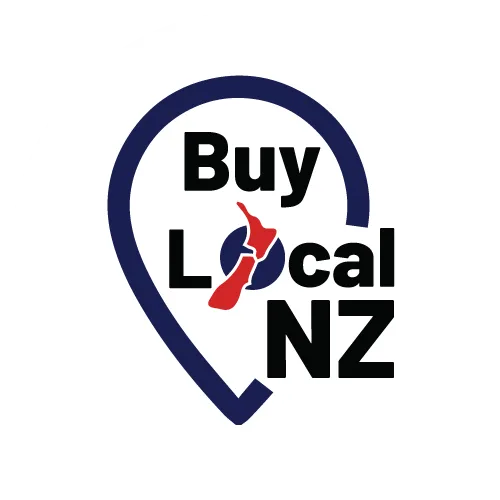
Best Service Area Settings For Google Business Profile
Set your Google Business Profile service area by first determining if you need a physical address or service radius based on your business type. For mobile businesses, start with a 15-50 mile radius depending on your service (e.g., 15-25 for food trucks, 30-50 for mechanics). Don't overextend your reach - focus on areas you can realistically serve. Track performance metrics and adjust your boundaries as needed. Our detailed guidelines will help you optimise your service area for maximum local visibility.
Key Points
- Set realistic service boundaries based on your operational capacity, typically within a 20-50 mile radius depending on your business type.
- Define primary, secondary, and tertiary zones to effectively manage multiple service areas while considering travel time and market demand.
- Begin with your business address, then add specific cities or postal codes while hiding the physical address for mobile businesses.
- Regularly analyse performance metrics and customer engagement data to adjust service area boundaries for optimal visibility and reach.
- Avoid setting overlapping service areas or including unreachable locations to maintain credibility and prevent customer confusion.
Understanding Service Areas vs. Physical Location
When setting up your Google Business Profile, you'll need to decide whether to display a physical address or service areas - a choice that greatly impacts your local visibility.
Service areas work best for mobile businesses like plumbers, landscapers, and house cleaners who travel to customers. Physical locations suit brick-and-mortar establishments where customers visit you.
Mobile service providers should select service areas, while businesses with physical storefronts benefit from displaying their actual address location.
You can break free from traditional location constraints by selecting service areas, allowing you to target multiple neighbourhoods or cities without being tied to one spot.
However, if you welcome customers at your location, displaying your physical address builds trust and helps people find you.
Setting Up Your Primary Service Region
For service-based businesses, selecting your primary service region marks the foundation of your Google Business Profile's reach.
You'll want to define an area that accurately reflects where you can deliver your services effectively without overextending yourself.
To set your primary region, enter your business address first, then specify whether you serve customers at your location. If you don't, you can hide your address and establish your service area by adding cities, postal codes, or drawing custom boundaries on the map.
Choose a radius that makes sense for your operations - too small limits visibility, while too large may attract leads you can't serve.
Remember to adjust your service area as your business grows or changes. You're not locked into your initial settings, so you can expand or contract your reach strategically.
Maximising Service Radius for Local Impact
Although setting your initial service area is essential, optimising your radius for maximum local impact requires strategic consideration.
You'll want to strike the perfect balance between reach and relevance to capture your ideal customers. Start by analysing your actual service capability and travel limitations. If you're willing to drive 30 minutes for clients, map that distance across different times of day to account for traffic patterns.
Don't overextend - it's better to dominate a smaller area than spread yourself too thin. Test different radius settings and track your visibility in local searches. You can adjust your service area monthly based on performance data.
Managing Multiple Service Areas Effectively
To manage multiple service areas in your Google Business Profile, you'll need to strategically define your core zones based on where you conduct most of your business activities.
You can create overlapping service areas while carefully monitoring the distance between them to maintain local relevance and avoid confusing potential customers.
Your service coverage should also reflect seasonal changes in your business operations, allowing you to expand or contract your reach based on weather conditions or peak demand periods.
Define Core Service Zones
When establishing multiple service areas in Google Business Profile, you'll need to strategically define your core service zones based on your business's operational capacity and target markets.
Start by identifying the regions where you can consistently deliver your services with maximum efficiency and profitability.
Break down your service territory into primary, secondary, and tertiary zones. Focus on areas where you have the strongest presence and highest customer density.
Consider travel time, local competition, and population demographics when mapping these zones. You can set boundaries using zip codes, cities, or custom radius settings.
Don't overextend your reach - it's better to dominate a smaller, well-defined area than to spread yourself too thin across a vast territory.
Regularly review and adjust your zones based on business growth and market demands.
Overlap and Distance Management
Managing overlapping service areas requires careful attention to distance and coverage optimisation.
You'll need to strategically position your service boundaries to maximise reach without diluting your local relevance or confusing potential customers.
When you're setting up multiple service areas, maintain a balanced distance between them - typically 10-15 miles apart for urban regions and 20-30 miles for rural areas.
Don't let your service areas overlap more than 30%, as this can weaken your visibility in specific locations.
Break free from traditional radius-based thinking and align your coverage with actual service patterns.
Map out your most frequent customer locations and adjust your boundaries accordingly.
This dynamic approach lets you capture more business while maintaining strong local presence in your primary zones.
Seasonal Coverage Adjustments
Since business demands often shift with the seasons, your Google Business Profile service areas should adapt accordingly.
You'll want to strategically adjust your coverage radius to match your operational capacity during different times of the year.
Key seasonal adjustments to contemplate:
- Expand your service area during peak seasons when you've got extra staff and resources
- Reduce coverage during off-peak months to maintain quality service standards
- Add temporary service zones for seasonal events or tourist destinations
- Adjust radius settings based on weather-dependent services
- Create separate holiday service areas for special offerings
Don't let your service area settings remain static throughout the year.
Optimising Service Areas for Search Visibility
To maximise your visibility in local search results, properly configuring your service areas in Google Business Profile requires strategic planning and precision.
Focus on defining specific neighbourhoods, districts, and zip codes rather than broad regional designations to boost your local ranking potential.
Break free from the constraints of generic service area settings by strategically selecting locations where you've built a strong customer base.
You'll want to prioritise areas with high search volume and less competition. Don't hesitate to adjust your coverage radius based on actual service patterns and customer density.
Remember to include emerging markets where you're actively expanding, but avoid overextending your reach.
Common Service Area Setup Mistakes to Avoid
While optimising service areas can boost your visibility, many businesses fall into common setup traps that hurt their Google Business Profile performance.
Break free from these limitations by avoiding essential mistakes that could restrict your reach.
- Adding too many service areas, which dilutes your local relevance
- Setting service boundaries too far from your base location
- Overlapping multiple business profiles in the same areas
- Including areas where you can't realistically provide service
- Failing to update your service areas when your business coverage changes
Remember to focus on areas where you consistently deliver service and maintain a strong customer base.
Success in service-based businesses comes from building a loyal customer base where you can reliably meet demand and deliver quality results.
Your service area settings should reflect your actual operational capacity rather than aspirational goals.
Service Area Best Practices for Mobile Businesses
Mobile businesses face unique challenges when setting up their service areas in Google Business Profile because they don't operate from a fixed storefront. You'll need to carefully define your coverage radius while ensuring you can realistically serve all locations within your set boundaries.
| Business Type | Recommended Radius | Service Area Strategy |
|---|---|---|
| Food Truck | 15-25 miles | Daily location updates |
| Mobile Mechanic | 30-50 miles | Zip code targeting |
| House Cleaning | 20-35 miles | City-based boundaries |
Set your primary service area where you conduct 80% of your business, then expand strategically based on demand. Update your radius seasonally if your coverage changes. Don't overextend - it's better to dominate a smaller area than spread yourself too thin. Keep your service area realistic to maintain high customer satisfaction and strong local rankings.
Tracking Service Area Performance Metrics
Tracking your service area performance involves three essential metrics: customer engagement, conversion rates, and search visibility within your defined boundaries.
Monitor these metrics to optimise your reach and impact in your service regions.
Key performance indicators you'll want to track:
- Click-through rates from local search results to your profile
- Number of direction requests from potential customers
- Customer actions (calls, messages, bookings) by geographic area
- Impression share compared to competitors in each service zone
- Conversion rates for different zip codes or neighbourhoods
Use Google Business Profile insights to analyse these metrics monthly, adjusting your service area boundaries based on real performance data.
This data-driven approach empowers you to focus your efforts where they'll generate the most returns and helps identify untapped market opportunities within your reach.
FAQs
Can I Change My Service Area Settings During Temporary Business Relocations?
You can adjust your service area settings during temporary relocations, ensuring your business stays visible to customers. Update your settings when you move and again once you've returned to your original location.
How Often Should I Update My Service Area Boundaries?
Don't feel stuck with rigid boundaries. You'll want to review and adjust your service areas quarterly or whenever your business capacity changes considerably. Monitor customer requests and market demands to stay competitive.
Do Service Area Settings Affect My Google Ads Targeting Options?
Your service area settings don't directly control Google Ads targeting, but you can leverage them to inform your ad campaigns and create more targeted geographic boundaries for your advertising strategy.
What Happens if Competitors Share Overlapping Service Areas With Mine?
Like ships sharing the same waters, you'll compete for visibility when service areas overlap. You'll need to differentiate through reviews, photos, and engaging posts to stand out among local competitors.
Will Changing Service Areas Delete My Existing Customer Reviews?
Don't worry - your reviews won't disappear when you update your service areas. They'll stay intact since reviews are tied to your business profile, not your geographic settings.
In Summary
Your service area settings can make or break your local visibility on Google Business Profile. By following these best practices, you'll maximise your reach while staying relevant to your target customers. Take Sarah's mobile dog grooming business - after optimising her service radius to 15 miles and adding specific neighbourhoods, her booking requests doubled within two months. Remember to regularly review your metrics and adjust your settings based on customer response patterns.

